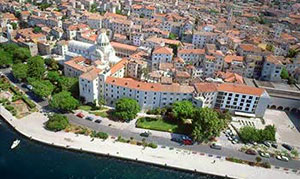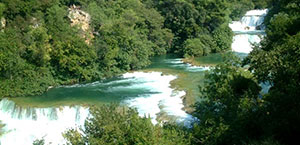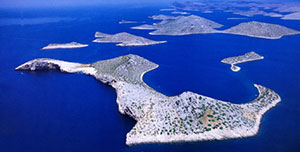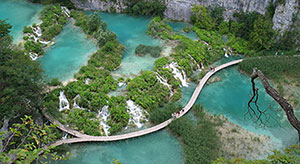Surroundings

Šibenik is the capital of the County Šibenik-Knin with about 152 thousand people living in 12 municipalities, 194 villages and 5 towns. Šibenik has about 55 thousand residents. The city of Šibenik, 45 km from St. Filip and Jakov, is a cultural and educational, administrative and economic center of the region. There are many cultural institutions in the city – County museum with departments: Archeological, Cultural heritage, Ethnographic, Gallery and Natural science; City Library, Department for the Protection of Cultural and Natural Heritage – Conservation Department Šibenik, Šibenik theater and International children festival, St. Krševans Gallery, Department of National Park „Krka“.

Split is a city that lives in a slow pace, which you will quickly be accustomed to. The feeling that every day is a holiday here, squares, restaurants and coffee bars full of people and unavoidable promenade “riva”, at which a mild summer wind “maestral” dominates, and in winter, like a winter coat, Mediterranean sun and palace protects against coldness, can be expressed in one word – you feel like home.

Krka National Park covers 14200 hectares in the area of Šibenik, Drniš and Knin, and stretches from the fort Nečmen and Trošelj under the loud waterfalls Manojlovac, Risnjak and Miljacka over 26m tall waterfall Roški, Visovačas lakes and Skradins noise (46m), which is the largest travertine barrier in Europe, then to Prokljan lake and submerged mouth of the river in Šibenik bay. Numerous historical and cultural monuments give this park a special significance – a Franciscan monastery on the island Visovac and the monastery of Krk.

Kornati are an unique island group in the Mediterranean with 89 islands and rocks that stretch on the surface of 302 km2. Landscapes and panoramas are specific to boaters and many visitors to the park. The wild beauty of stone, clear blue sea, hidden coves, the unusual nature of contrasts, especially the world of silence, are a unique experience. Sea cliffs, caves (hatches), pits, whole meadows of posedonias and marine flowering plants, corals and shellfish are an invaluable wealth that the area of the National Park is wealthy with.

The most beautiful and most famous Croatian national park, part of the UNESCO World Heritage, located beside the main road connecting Zagreb with Dalmatia; 16 small lakes are connected to each other by waterfalls created naturally by layers of travertine, thick forests of European beech and fir, partially like an ancient forest, many animal species (including the Brown bear), special transport for sightseeing and electric ferries are organized for visitors. Phenomenon of Plitvice Lakes are travertine barriers. For their emergence, optimal match of several elements is necessary: temperature, plant life and environmental cleanliness.
